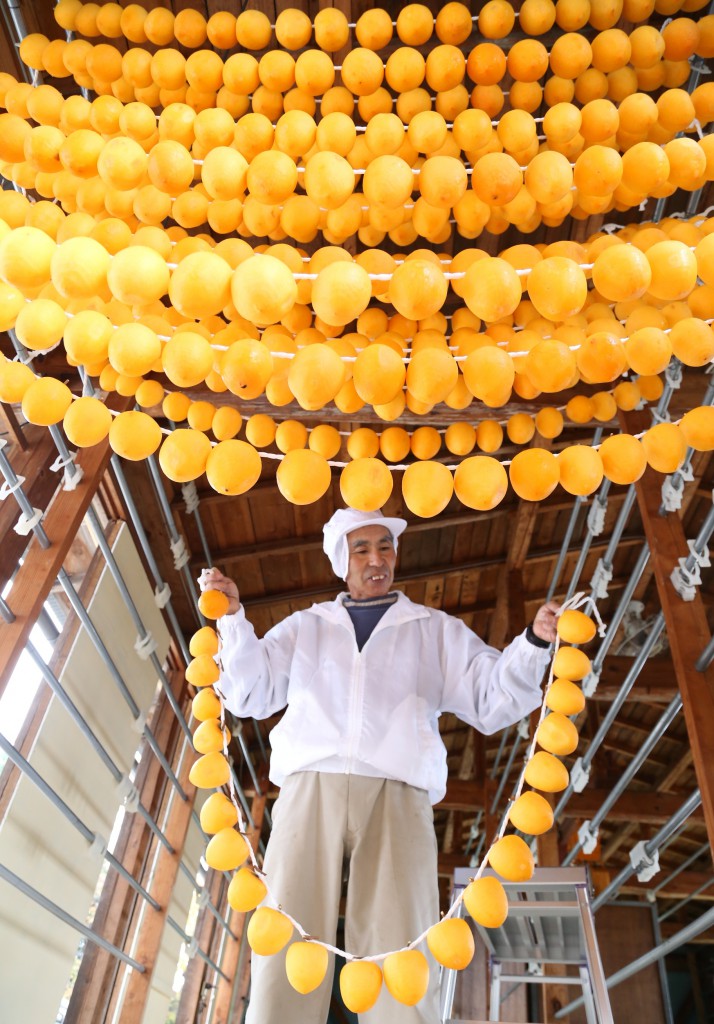
A farmer in Date, Fukushima Prefecture, hangs rows of peeled persimmons in a drying room to make “anpokaki,” or dried persimmons.
Some farmers in Date, Fukushima Prefecture, resumed production of “anpokaki,” or dried persimmons, which was put on hold for three years because they feared radioactive fallout from the Fukushima No.1 nuclear plant.
Satoshi Shishido, 61, head of the anpokaki production team of an agricultural cooperative in Date, started on Friday, November 15, the processing of “hachiya,” the main persimmon variety for anpokaki, including peeling, tying them onto drying ropes and fumigating them using sulphur.
“Now we can finally make anpokaki,” Shishido said cheerfully. “I soon remembered the working procedures.” The persimmons are hung in rows in a drying room for roughly a month to become anpokaki.
Anpokaki produced in Date will be shipped to markets mainly in Tokyo and Kanagawa Prefecture starting in December. This year, the producers introduced a device which can measure the radioactive cesium concentration in the persimmons without squashing them, and will market only the ones whose radiation level is below the national safety limit.
(Nov. 18, 2013)

